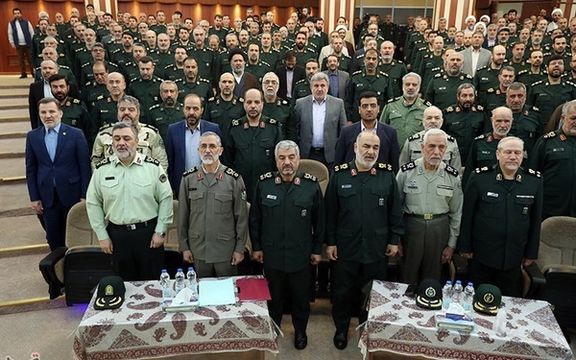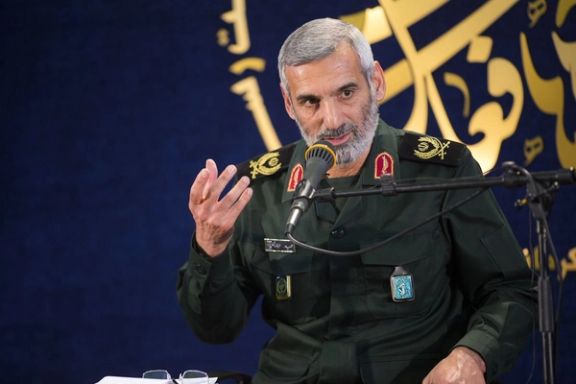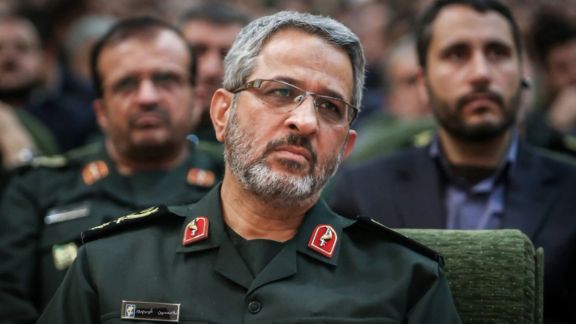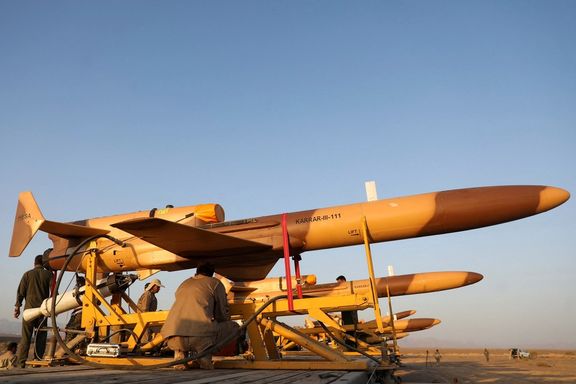Official Says 800 Starlink Internet Devices Already In Iran

An Iranian official has said that around 800 Starlink satellite internet receivers have been imported to Iran, saying the technology would be used more in future.

An Iranian official has said that around 800 Starlink satellite internet receivers have been imported to Iran, saying the technology would be used more in future.
Head of the Tehran Telecom Traders Union Mehdi Mohebi quoted an “official” who did not want to reveal his identity that 800 Starlink satellite internet terminals have entered the country so far.
This comes as the American tycoon Elon Musk said last week that the use of satellite internet services in Iran has increased and around 100 Starlink devices are active in the country now.
Musk said in a tweet that “approaching 100 Starlinks active in Iran”, three months after he confirmed he would activate the service in the country to help Iranians circumvent internet restrictions imposed by the government amid nationwide protests.
Back in September the billionaire, who is now also a social media player by controlling Twitter, had announced he would activate Starlink in Iran as part of the United States’ effort “to advance internet freedom” and facilitate “the free flow of information” to Iranians.
The Iranian regime has been severely restricting Internet access in general and access to popular social media platforms, such as Instagram, in particular that play a key role in protester communications. These restrictions have caused many problems for those who rely on social media to promote their businesses and hugely damaged e-commerce.
It is not clear who are the importers of the receivers, which the government views as illegal. Most likely, the devices are brought from across the borders by small-time smugglers.

Since the start of the antigovernment protests, remarks by military commanders about the unrest are occasionally leaked to the media leading to speculation that the leak was intentional.
A video footage of Revolutionary Guard Commander Brigadier General Hamid Abazari is one of these contentious leaks. In a video released recently, Abazari hinted at division among the Islamic Republic’s top military men amid continuing anti-regime protests.
Abazari, who formerly served as deputy commander of the Imam Hossein Training and Officer University, criticized senior commanders and officials who had "failed [to stand by] the values of Supreme Leader Ali Khamenei and the regime." He claimed that he personally knows several high-ranking IRGC senior officers, including some of his own commanders, who caved in and did not support the regime.
Abazari also rebuked senior civilian officials who had not condemned the protests and alleged that some stood against Khamenei.
IRGC’s public relations department reacted to his remarks on December 31, issuing a statement stressing that this was Abazari's personal opinion and "does not correspond to existing facts."

Moreover, another senior officer in the Revolutionary Guards who formerly commanded Basij forces, Gholamhossein Gheybparvar, criticized "some elites" for staying silent about the protests and abandoning the “Islamic Revolution.”
Criticizing the unnamed individuals he lamented that "We should not have doubts in such a situation,” adding, “We do not deny having economic problems, high prices, unemployment, etc., but does the regime deserve that everybody stabs a knife into its body?"
Such remarks were also brought up in early December when hacktivist group Black Reward released tens of files containing IRGC-linked Fars News Agency's exclusive security briefings for the Guard’s Commander Hossein Salami. One document said Supreme Leader Ali Khamenei had complained to former Parliament Speaker and his close relative Gholam Ali Haddad-Adel that some of the regime’s elites have remained silent about the protests.

Many insiders not only stopped expressing support, but have started to denounce the regime’s policies that have led to the current uprising.
In December, a member of Iran’s Supreme Council of the Cultural Revolution acknowledged that the Islamic Republic has failed to achieve its desired religious ideological goals. Ultra-conservative Hassan Rahimpour Azghadi is regarded as a leading advocate of the ruling clergy and the ideology of a government controlled by the clergy, in contrast with traditional Shiite thinking that favors keeping seminarians independent of the government.
Some people on social media believe that such leaks are meant to pressure regime insiders to come out in defense of the Islamic Republic, which has never seemed so battered and bruised by over 100 days of popular protests challenging its existence. Even if such statements are leaked intentionally or as publicity stunts, it cannot be ignored that Ali Khamenei and his top supporters feel isolated and unable to change the situation to the former status quo.

The Iranian military says it launched a drone to warn off a reconnaissance plane trying to approach Iranian war games near the Persian Gulf.
Fars News Agency, affiliated to the Revolutionary Guard, said Saturday that the warning procedure was carried out by Iranian drone Karrar; however, it did not specify the nationality of the reconnaissance aircraft.
The US State Department has refused to comment on the report referring questions to the Pentagon, which declined to comment as well, according to Reuters.
Iran’s military began to test new attack drones in the coastal area of the Gulf of Oman and near the strategic Strait of Hormuz since Thursday as part of its annual drills.
“During the exercises, a P-8 manned intelligence aircraft belonging to extra-regional forces, which had tried to reduce altitude to collect more accurate information from the exercise area, was forced to leave the area by the firing of a Karrar drone by (Iran's) air defense,” Fars reported.
Last week, top Iranian military official General Mohammad Bagheri said the Islamic Republic will continue to develop drones according to its interests and Tehran will cooperate with other countries in this regard.
According to IRNA, Chief of General Staff of the Iranian Armed Forces said the country’s UAVs are accurate enough to respond to any threat endangering its interests.
Bagheri, however, did not name any specific country with which the Islamic Republic is cooperating to develop UAVs.

Iranian conservative lawmaker Elias Naderan has resigned asking the speaker of parliament to read his resignation letter in an open session.
ISNA news agency reported Sunday that Naderan announced his resignation asking that “the reasons for his decision must be read and the presiding board is not allowed to interpret it.”
He was previously a member of the Islamic Revolutionary Guard Corps (IRGC) and a member of parliament for four terms.
As the political and economic conditions deteriorate for the clerical regime, more disagreements have emerged among influential insiders.
Many on social media believe his resignation is related to the political crisis in the country after more than 100 days of anti-regime protests, triggered in September by the death of Mahsa Zhina Amini in ‘morality police’ custody.
His insistence on reading the text of his resignation in the open session of the parliament would mean that he is critical of some decisions in the country.
However, some others believe his resignation is a tactic to win more perks from the regime and occupy an important post in the government of President Ebrahim Raisi.
Earlier in August, there were unconfirmed reports about Naderan’s resignation after he sharply criticized Parliament Speaker Mohammad-Bagher Ghalibaf.
On November 16, Naderan called for “major structural changes to the system,” demanding changes to the country’s constitution.

Lebanese media report that Hezbollah is facing financial problems due to the situation in Iran, as it cannot import Iranian goods to sell at a discount to its supporters.
Two years ago, Lebanon's Hezbollah distributed a card called "Sajjad" among the families of its members to buy food stuff with a 60% discount at shops selling Iranian products.
The Lebanese website "Janoubieh" quoted its sources as saying that now shopping with this card has encountered problems.
According to this report, the Islamic Republic is unable to send food items such as cooking oil and tea to Lebanon due anti-regime protests and its economic problems, including the sharp increase of the US dollar against its currency, the rial.
The militant Hezbollah group has reportedly replaced Iranian goods with the Lebanese, Turkish, and Indian items for the users of the Sajjad card.
Makram Rabah, a Lebanese political activist, emphasized in an interview with Iran International that the consequences of the uprising of Iranians against the regime could now be seen in Lebanon.
He said the dire situation of the Islamic Republic, as the biggest financial and political supporter of Hezbollah, causes this group to lose the ability to stand on its own feet.
Earlier, some media, including Jerusalem Post, reported that the Palestinian groups affiliated to the Islamic Republic have also suffered a financial crisis because of troubles Iran faces.

Iran’s battered currency regained 10 percent of its value Saturday after a new central bank chief assumed office following a drop to historic lows in December.
The US dollar dropped to below 400,000 rials from a high of 440,00 earlier this week, a 10-percent gain for the Iranian currency that has fallen more than 10-fold since 2018.
The new central bank chief Mohammad-Reza Farzin announced the bank’s intervention in the market as he began his first official day at work.
“The exchange rate in the open market is exaggerated,” he claimed, although an apparent massive infusion of dollars was needed to reverse rial’s precipitous decline. He added that economic fundamentals do not justify the currency’s fall, insisting that Iran sold $36 billion of oil in the past nine months.
Farzin did not explain why the rial has fallen to unprecedented lows if the country is flushed with hard currency, but he vowed “appropriate intervention” in the market to support the rial.
Even with Saturday’s rise, the currency is still 30 percent lower than in August and almost 50 percent less than in mid-2021, when the current hardliner president Ebrahim Raisi was elected and appointed other hardliners to top positions.
Rial’s current wave of decline began in early 2018 when the United States decided to withdraw from the Obama-era nuclear accord with Iran, known as the JCPOA and impose ‘maximum pressure’ sanctions. The country’s oil exports, its economic lifeline, and international banking came under US third-party sanctions, meaning that any company or country violating the restrictions could itself come under US sanctions.
The rila which was then around 34,000 to the dollar began to fall, with the government forced to offer cheap foreign currency to importers of essential goods, to protect people from an inflationary shock.
The government’s fixed-rate 42,000 rials for one dollar soon became a source of abuse by people who claimed to be importing essential goods, like food or raw materials, and instead imported luxury cars or simply turned around and sold the cheap dollars on the free market making huge profits.
The government began restricting the availability of dollars at 42,000 rials and earlier this year completely ceased the practice, saving around $15 billion annually, but accelerating food price inflation. In effect an important subsidy was removed, raising food, animal feed and medicine prices.
Following this inflationary shock, in early September talks with the US and its European allies to revive the nuclear deal fell apart, signaling a possible worsening of the economy. This triggered a new wave of rial’s de facto devaluation, as it fell in Tehran’s open market. Local reports also have mentioned accelerated capital flight from the country, which might have played a role in the sudden worsening of the exchange rate.
At the same time, nationwide antigovernment protests began in mid-September after Mahsa Amini, a young woman was killed in police custody. The popular uprising created a deeper feeling of instability and uncertainty.
Ali Shariati, a member of Tehran’s chamber of commerce predicted that the rial will be stabilized at 380,00-390,000 to the dollar by the government.
This might be the government’s goal, but to maintain the rial at that range, the central bank will have to continue injecting dollars into the market, a significant part of which simply leaves the country, to the tune of at least $10 billion annually.